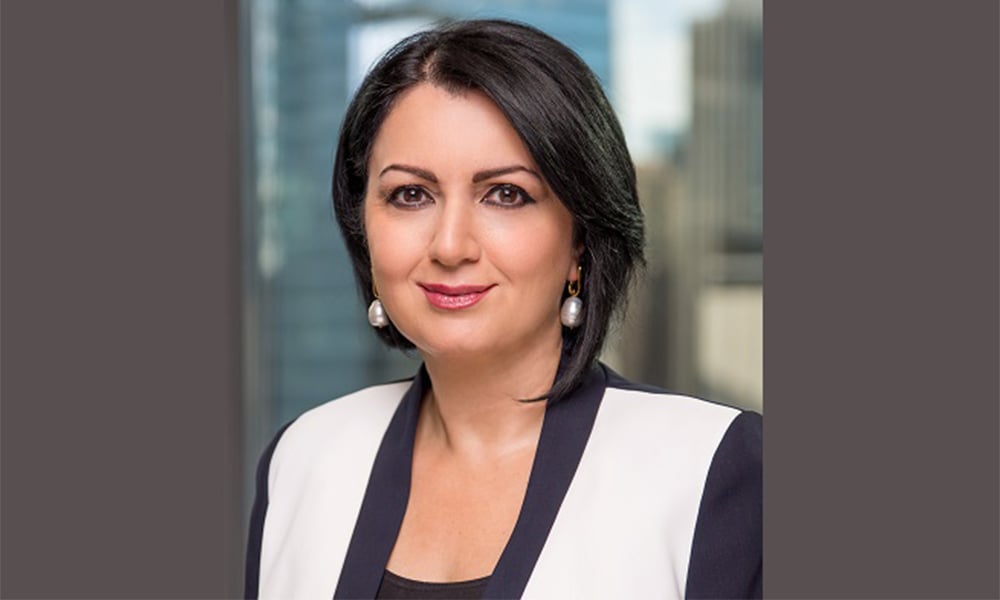Top advisor on the importance of risk assessments and how financial housekeeping can avert self-sabotaging responses

It’s been more than half a year since the onset of the COVID-19 pandemic catalysed a historic spate of market turmoil, and many investors are still reeling from the shock. While their portfolios may have already recovered from the damage sustained in the first quarter, the first quarter still proved to be a painful lesson – one that Tina Tehranchian, FP Canada Fellow and Certified Financial Planner with Assante Capital Management Ltd., feels that her clients should take to heart.
“It's been definitely a wakeup call,” said the Richmond Hill, Ontario-based senior wealth advisor at Assante Wealth Management. “I think the current volatility was a great opportunity for financial advisers to show the value of advice to their clients.”
The value of Tehranchian’s expertise is clear from the numerous distinctions she’s earned. Aside from winning the coveted title of Financial Adviser of the Year at the inaugural Women in Finance Canada last year, she’s also the first Canadian to be named as Top Senior Wealth Advisor of the Year by the International Association of Top Professionals (IAOTP). More recently, she was a double-category finalist at the Wealth Professional Awards 2020, where she was named as Silver Winner for Canadian Advisor of the Year.
Like the rest of the wealth-management industry, Tehranchian’s practice has accelerated its adoption of videoconferencing platforms like Microsoft Teams or Zoom. While a few clients have asserted a strong preference for in-person meetings, the vast majority have taken to email and online conversations, with shared screens and secure links replacing printed-out financial plans and portfolio charts.
“The big issue with clients actually has been revisiting their risk tolerance,” she said. “Until people experience a major downturn like we experienced in the first quarter, sometimes they do not have a realistic sense of how much downside risk they can tolerate in their portfolio.”
In the course of reviewing and re-administering each of her clients’ risk tolerance questionnaires, Tehranchian said that the answers in the majority of cases have fortunately been largely consistent pre- and post-pandemic. In a few instances, risk tolerances appeared to go down, which she said is likely due in part to the clients’ transitioning to a later stage in life.
“I think it’s a golden opportunity for advisors to revisit risk with their clients because it’s fresh in their memory, that sense of freefall that happened in the first quarter,” Tehranchian said.
In cases where there was a misalignment between a client’s risk tolerance and their portfolio allocations, she was careful to not do the rebalancing right away. Instead, she waited to let the worst of the market volatility run its course; in the past few months, when it became clear that markets had settled down and most of the losses in March had been recouped, she’s begun to take on the task of rebalancing in earnest.
“I think clients should make risk management their top priority and not take more risks than they're comfortable with,” Tehranchian said, highlighting the importance of practices like proper diversification, currency hedging, and the use of cash and alternative assets. “Managing risk is even more important than it used to be, and as long as you make risk management your top priority, you can minimize your losses.”
Of course, losses are unavoidable in the world of investing, which is why she reminds clients that it should be a long-term undertaking. That means not putting money in the stock market if they need it for near-term priorities like home renovation, buying a property, or sending children to school. But even then, some clients may succumb to a severe panic attack as they see the S&P 500 tumbling, in which case it’s the advisor’s job to provide some much-needed comfort.
“We just went over their financial plan and pointed out that their overall net worth has not really decreased,” Tehranchian said. “We had had quite a few good years where their portfolio has outperformed our expectations and our rate-of-return expectations, so we were still on track despite the drop.”
Aside from such ad-hoc financial evaluations, she makes a point of subjecting clients’ financial plans to Monte Carlo analyses, running between 750 and 1,000 statistically randomized scenarios based on different expectations on rates of return and life expectancy, among others. Those tests showed that among the few of her clients who panicked this year, substantially all could still easily achieve their financial goals even with a rate of return between zero and 2%.
“I always remind my clients that you’ve got to make sure that you have a cash cushion,” she said. “If you have income needs, make sure you have a cash wedge in your portfolio so that you do not have to sell in a down market. And if you don't need income from your portfolio, it's still good to have some cash so you can go bargain hunting when the market crashes.”
Still, the temptation to buy in down markets can be taken too far. The downturn in financial markets has also given way to a rush of speculators, which include gamblers who needed a new betting ground after being displaced from casinos. In that environment, many investors can find themselves taking advice from the worst sources, and consequently fall prey to the most basic mistakes such as performance chasing, buying high, and selling low.
“That's the most dangerous thing,” Tehranchian said. “You should only take advice from qualified professionals because guess what? The next fall might be around the corner. No one knows what will happen next, so we all need to get better at adapting and reacting. We have to proceed with caution and have an exit strategy.”
Right now, investors are probably wracking their brains trying to come up with a pandemic-proof financial plan. To many, that means coming up with a “plan for all seasons” that they can just set and forget. But from where Tehranchian sits, a financial plan has to be viewed as an ongoing exercise in risk management; that means sitting down with a planner to dynamically manage and review all aspects of risk that can impact one’s portfolio of wealth – even if the Monte Carlo models suggest they’ll get along fine even with a 2% return over the long term.
“That may work if you’re able to go without even looking at your portfolio for the next 20 years,” she said. “But I have not met anybody who had that sort of patience.”



